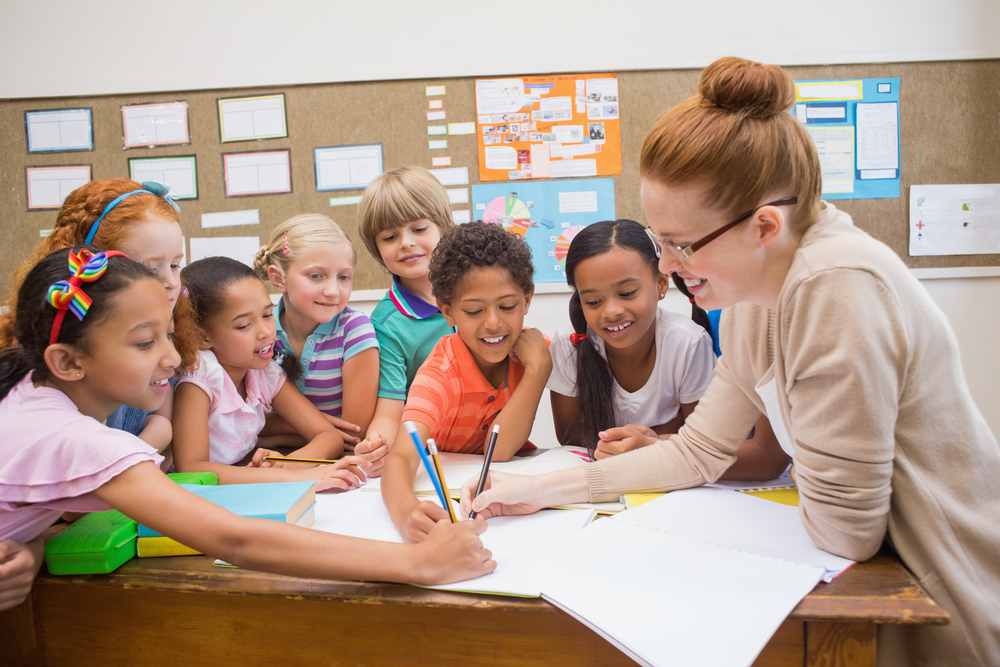Why We Shouldn't Stop Technology-Led Learning in Schools Post-Lockdown
Technology in learning has fast become the go-to response for dealing with the effects of COVID-19 on education. Although students have been taking lessons from home, there's a consideration to adopt a blended mode of learning (a mix of online and in-person) now that schools are reopening.
But this change exposes several issues for the education sector that will be important to solve going forward. Here’s why we shouldn’t stop technology-led learning in schools post-lockdown.
-
The State of Technology-Led Learning
-
The Social-Digital Divide
-
Should Education Be Increasingly Digital?
The State of Technology-Led Learning
With social distancing still being enacted and some schools taking a blended learning path, technology-led study is becoming increasingly present in classrooms (or at home) and potentially more popular. Many schools and families are embracing technology, some to keep studies as ‘normal’ as possible. In the world after COVID-19 and social distancing, this might be a trend that stays.
For many families, the transition to online learning was thrust upon them. When schools in the UK closed, there was a fast uptake of digital technologies used to enhance and support online learning. For example, 100,000 schools worldwide are using teleconferencing app Zoom.
Similarly, the work management tool Trello saw an uptake in signups of 73% compared to last year. The uptake in new technologies can be seen in a positive light as more people are learning to become increasingly digitally literate. However, there are certain concerns about this.
Michael Morris, Director of the Digital Pedagogy Lab at the University of Colorado, stated: “There’s an equally important downside to the movement of work-related technologies into home life, too. Technology is useful, but it is not a substitute for the classroom.”
However, the COVID-19 pandemic has allowed education professionals to look at the education system and reevaluate any lacking areas. They’ve been provided with the impetus to change up the education sector. The addition of technology allows teachers to see how personalised learning can be truly implemented with education shifting towards a more learner-centred position.
“Parents should consider technology to be a tool for interactive learning, for socialising and for social-emotional health and wellbeing at this time,” said Sarojani S Mohammed, Founder of research group Ed Research Works.
She added: “2020 is illustrating to us what the true non-negotiables are in our conventional education systems, what our critical goals are for learners and alternatively where we do, in fact, have room to innovate.”
The Social-Digital Divide
However, the move towards technology-led learning hasn’t been completely positive. It’s also exposed key issues in the inequality surrounding education in the UK. A study by the Office for National Statistics found that in 2019:
-
Approximately 60,000 children from the ages 11 to 18 don't have internet access in their homes.
-
Around 700,000 children don't have a computer, laptop or tablet to access online learning.
This means there's a serious problem in the UK: The social-digital divide. The potential for lesser-advantaged or poorer children to miss out on learning, if online or blended learning continues, is large.
It’s a change that has put expectations on parents to provide the technology so children can continue learning, but this is highlighting the distinct economic divides in the country. Internet and device access shouldn’t be the line between being able to study and missing out on educational development.
Exposing this can be seen as a benefit as it wasn’t an issue fully experienced in the context of traditional, classroom-based education. However, we’re now at a crossroads. Both government departments and education providers need to work together to lessen the gap between children and their access to technology.
“Too many students are without internet at home, or adequate enough broadband to be able to participate in school. Too many families can’t afford computers or mobile devices,” said Morris.
He went on to explain: “I think the best technological innovation or change that should come next would come as a result of looking carefully at issues of equity and either redesigning existing technologies or revisiting the whole endeavour.”
Through correct planning and delivery, digital education can bridge the gap between lesser advantaged students and their peers. In April, it was announced some pupils would be eligible for free laptops to help them with their remote education.
Devices will be ordered for children in the most vital stages of their education, those who receive support from a social worker and care leavers.
The government will also provide 4G routers to make sure disadvantaged secondary school pupils and care leavers can access the internet for families that don't already have mobile or broadband internet in the household.
However, this hasn’t been as successful as first hoped. As of June 17th, 68,000 laptops still hadn’t been delivered and only 60% of routers had reached their destinations. Universalising internet-capable technology is going to be a big issue for the education sector going forward.
To clarify, the main focus of education shouldn’t be trying to incorporate new, innovative technology. That's a nice-to-have, but it isn't mission-critical. The real focus should be on how to make the technological offering for pupils more equitable and equally available, both in and out of the classroom.
Should Education Be Increasingly Digital?
The shift towards a more blended, digital approach to education isn't slowing down. While there are some issues, it’s also in a good position to amend them. It’s also a method that comes replete with benefits for children and young people. For example:
Teacher Feedback Is Quick and Trackable
With online documents, pupils can submit work and have it amended in real-time. Some platforms, such as Google Docs, even allow comments and conversations to be had on the document, meaning further learning can be accomplished. Similarly, students can share their work with the class for peer review.
If that application is cloud-based, then a student can work anywhere with a WiFi connection. Alternatively, they can work offline and then sync their work at a later date.
Students Benefit From Multimedia Experience
Learning can be presented in software form and in many different mediums, rather than simply being presented on a whiteboard. This means students can interact and even manipulate the information they’re working with.
It's also better for students who favour non-verbal or non-written learning and communication as they can effectively demonstrate their understanding without resorting to methods they don’t enjoy.
Similarly, technology can also help those students with their verbal or written communication. When writing, students can use plug-ins like Grammarly to automatically check their spelling and grammar, helping them to spot mistakes in the future.
Online Learning Is Expansive
For all its issues, the internet still represents the largest online resource for students. While its use should be properly supervised, there's effectively no limit to what children and young people can learn. Teachers can make use of this, linking to pre-screened webpages for children to explore as supplementary sources in their education.
It’s possibly the best place for learning from different perspectives about single topics, meaning that a wide view of a subject can be grasped.
Pupils Can Learn in a Style That Suits Them
To the extent allowed by the teacher and the platform being used, digital learning allows pupils to design their own approach to learning, otherwise known as ‘personalised learning’. Whether it’s by researching in a specific way or choosing a specific supplementary platform (such as Duolingo for language learning), learners can explore topics in new and creative ways.



